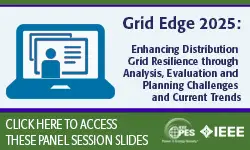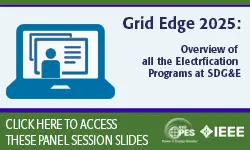Evaluating Distributed PV Curtailment Using Quasi-Static Time-Series Simulations
Joseph A. Azzolini, Matthew J. Reno, Nicholas S. Gurule, and Kelsey A. W. Horowitz
-
Members: FreePES
IEEE Members: Free
Non-members: FreePages/Slides: 12
15 Sep 2021
By strategically curtailing active power and providing reactive power support, photovoltaic (PV) systems with advanced inverters can mitigate voltage and thermal violations in distribution networks. Quasi-static time-series (QSTS) simulations are increasingly being utilized to study the implementation of these inverter functions as alternatives to traditional circuit upgrades. However, QSTS analyses can yield significantly different results based on the availability and resolution of input data and other modeling considerations. In this paper, we quantified the uncertainty of QSTS-based curtailment evaluations for two different grid-support functions (autonomous Volt-Var and centralized PV curtailment for preventing reverse power conditions) through extensive sensitivity analyses and hardware testing. We found that Volt-Var curtailment evaluations were most sensitive to poor inverter convergence (-56.4%), PV time-series data (-18.4% to +16.5%), QSTS resolution (-15.7%), and inverter modeling uncertainty (+14.7%), while the centralized control case was most sensitive to load modeling (-26.5% to +21.4%) and PV time-series data (-6.0% to +12.4%). These findings provide valuable insights for improving the reliability and accuracy of QSTS analyses for evaluating curtailment and other PV impact studies.


